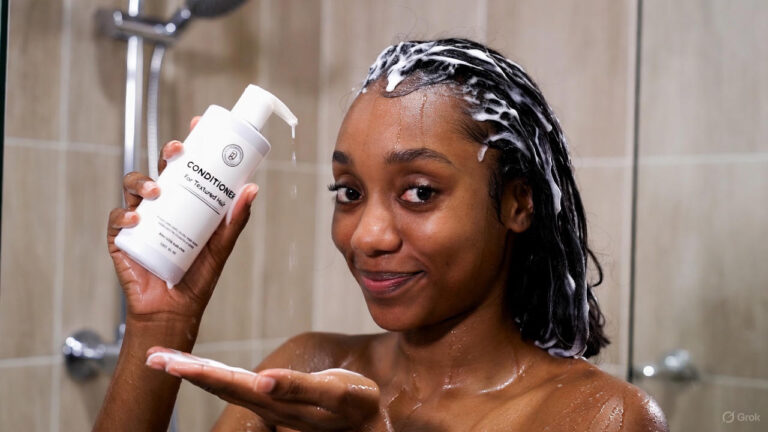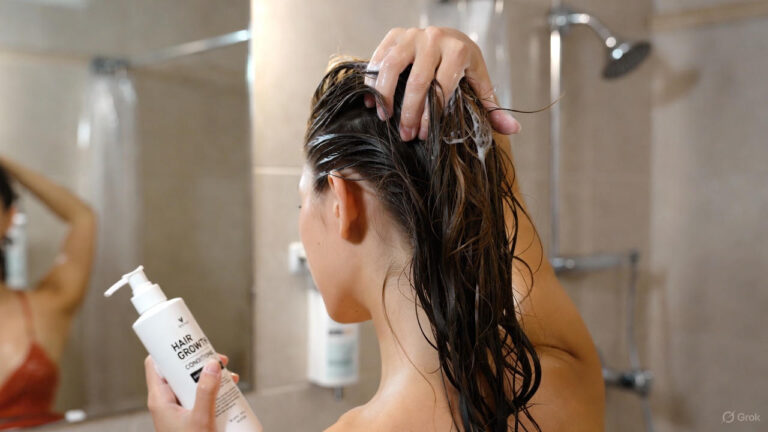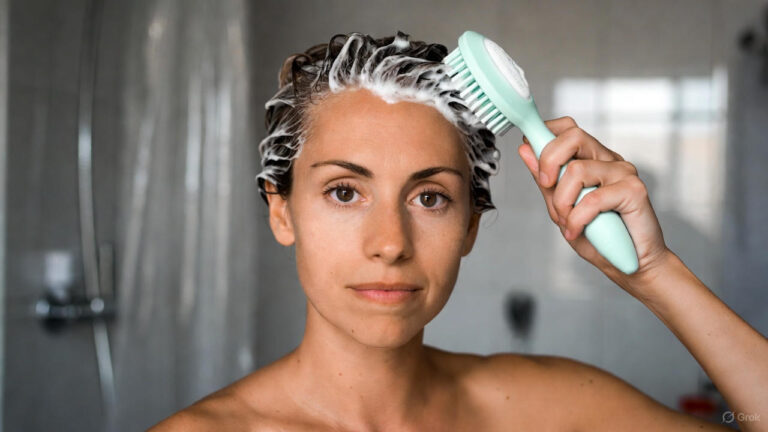We all want to maintain healthy, luscious hair, and drying it after a shower seems like a routine part of our hair care regimen. However, did you know that drying your hair weekly may have several disadvantages that can affect its overall health and appearance?
In this article, we will delve into nine significant drawbacks of frequent hair drying and provide valuable insights on how to mitigate these issues.
Disadvantage 1: Damage to the Hair
One of the most prominent disadvantages of drying your hair weekly is the potential damage it can inflict. The intense heat from hair dryers can lead to structural harm, causing weakened hair strands, split ends, and breakage.
The heat disrupts the hair cuticle, which acts as a protective barrier and alters the protein structure within the hair shaft, leading to diminished strength and elasticity.
To minimize damage, consider using a lower heat setting on your hair dryer, applying heat protectant products, and allowing your hair to air-dry partially before using any heat styling tools.
Disadvantage 2: Loss of Moisture
Frequent hair drying can strip your precious tresses of their natural moisture, resulting in dryness and brittleness. Heat depletes the hair of its essential oils, leaving it parched and prone to breakage.
Proper hydration is crucial for maintaining the health and appearance of your hair. To combat moisture loss, incorporate deep conditioning treatments into your hair care routine, use leave-in conditioners or hair oils, and limit the frequency of hair drying.
Disadvantage 3: Scalp Irritation
Excessive hair drying can also lead to scalp irritation, causing discomfort and itchiness. The high temperatures can dry out the scalp, leading to flakiness and inflammation.
A healthy scalp is vital for hair growth and overall hair health. To prevent scalp irritation, avoid placing the dryer too close to your scalp, use a lower heat setting, and consider incorporating a moisturizing scalp treatment or soothing scalp masks into your hair care regimen.
Disadvantage 4: Fading Hair Color
If you frequently color your hair, excessive heat from drying can accelerate color fading. The high temperatures can cause the color molecules in hair dye to break down, resulting in dull, faded hues.
To preserve your hair color, allow your hair to air-dry as much as possible, use color-protecting shampoos and conditioners, and opt for cooler settings on your hair dryer when necessary.
Disadvantage 5: Increased Frizz and Static
Heat styling, including frequent hair drying, can exacerbate frizz and static in your hair. The heat disrupts the hair’s moisture balance and lifts the hair cuticle, leading to frizz and static electricity buildup.
This can make your hair appear unruly and difficult to manage. To combat frizz and static, try using anti-frizz serums or leave-in conditioners, use a diffuser attachment on your hair dryer, and consider incorporating hydrating masks into your hair care routine.
Disadvantage 6: Weakening of Hair Shafts
Regular hair drying can weaken the hair shafts, leading to thinning and increased hair loss. The prolonged exposure to heat can compromise the structural integrity of the hair, making it more susceptible to damage and breakage.
To strengthen your hair shafts, incorporate protein-rich hair treatments into your routine, avoid excessive heat, and adopt gentle hair drying techniques such as patting your hair dry with a soft towel.
Disadvantage 7: Increased Risk of Heat Damage
Exposing your hair to excessive heat for prolonged periods of time, such as during weekly hair drying sessions, significantly increases the risk of heat damage. Heat damage occurs when the hair is subjected to temperatures that exceed its tolerance level, resulting in irreversible changes to its structure.
Signs of heat damage include heat bubbles, melted hair strands, and a lack of elasticity. To minimize the risk of heat damage, always use heat protectant sprays or serums before drying your hair, keep the dryer at a safe distance from your hair, and limit the duration of heat exposure.
Disadvantage 8: Time and Energy Consumption
Frequent hair drying can consume a considerable amount of time and energy. The process of blow-drying, especially for those with long or thick hair, can be time-consuming and may disrupt daily routines.
Additionally, excessive energy consumption from using hair dryers regularly can have an environmental impact. To save time and reduce energy consumption, explore alternative hair-drying methods such as air-drying, towel-drying, or using low-heat settings on your hair dryer.
You can also consider investing in quick-drying hair towels or microfiber towels to speed up the drying process.
Disadvantage 9: Dependency on Heat Styling
Regularly drying your hair with heat can create a dependency on heat styling tools, making it challenging to embrace your hair’s natural texture. Heat styling can alter your hair’s natural wave pattern or texture, leading to a reliance on straighteners, curling irons, or other heat-based styling tools to achieve the desired look.
Embracing your natural hair texture reduces the risk of damage and promotes hair health in the long run. To transition away from heat styling, experiment with different hairstyles that accentuate your natural hair texture, seek professional advice on haircuts that work well with your natural hair, and use styling products that enhance your hair’s natural beauty.
Conclusion
While drying your hair may seem like a routine step in your hair care regimen, it’s essential to be aware of the potential disadvantages it can bring. Frequent hair drying can lead to hair damage, moisture loss, scalp irritation, color fading, an increased risk of heat damage, and a dependency on heat styling. However, by implementing preventative measures and exploring alternative drying methods, you can mitigate these disadvantages and promote healthier, more resilient hair.
FAQs
1. Is air drying a better option than using a hair dryer?
Air drying is generally gentler on the hair compared to heat drying. However, it may take longer for the hair to dry completely. If using a hair dryer, opt for lower heat settings and use heat-protectant products to minimize damage.
2. Can I still blow-dry my hair occasionally without causing significant harm?
Occasional blow-drying is unlikely to cause significant harm if proper precautions are taken. Use lower heat settings, keep the dryer at a safe distance from your hair, and apply heat-protectant products before drying.
3. Are there any benefits to using cold air instead of hot air when drying hair?
Cold air can help seal the hair cuticles, reducing frizz and increasing shine. However, it may take longer for the hair to dry using cold air alone.
4. How can I maintain my hair’s volume and style without using a hair dryer?
To maintain volume and style without a hair dryer, consider using volumizing products, styling mousses, or lightweight gels. Experiment with different hairstyles, such as braids or updos that can help maintain volume and shape as the hair dries naturally.
4. Are there any natural alternatives to heat drying?
Yes, there are several natural alternatives to heat drying that can help expedite the drying process without subjecting your hair to excessive heat. One option is towel-drying, where you gently squeeze and blot your hair with a soft, absorbent towel to remove excess moisture.
Another alternative is using a microfiber hair towel or a T-shirt made of soft, moisture-absorbing fabric to gently absorb water from your hair without causing friction or damage.
Additionally, you can try air-drying by allowing your hair to dry naturally without any external heat sources. Simply let your hair down, avoid touching it too much while it dries, and embrace its natural texture.



